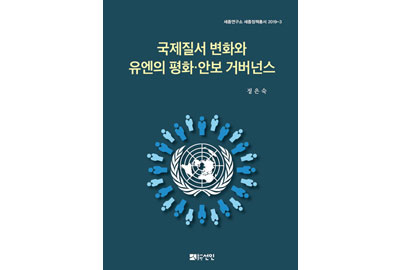Putting the atrocities of war behind and beginning with 51 countries in 1945, the United Nations currently is the largest international organization in the world with 193 member states and assumes the central role in overcoming various challenges that the humankind faces.
Changes in Global Order and UN Governance of Peace
and Security is a collection
of existing research outcome of senior research fellows at the Sejong
Institute. It organized pre-existing studies alongside new writings related to
the topic. Starting from the overall understanding of the organization, the
book delves into the following elements from the UN governance of peace and
security: the dynamics of UN Security Council and tasks and achievements of
former UN Secretary-Generals; possibilities and challenges of UN Peace-Keeping
Operations (UNPKO); UN’s role in internationalization of human rights; the
risks entailed in nontraditional security threats and UN’s tasks; the impact
and influence of UN Security Council sanctions in pursuant to the Chapter 7 of
the UN Charter, particularly related to the evolution and challenges of the
sanctions regime against North Korea; and the realistic struggle and the
competition framework outside the UN among the five permanent members of the UN
Security Council which enjoy veto rights and the changes in international order
which cannot avoid this discord.
In a nutshell, Changes in Global Order and UN Governance of
Peace and Security focuses on UN’s activities of peace and security under
its interaction with the changing global order, examine the state of affairs,
and point to directions of development from the mild criticism of governance
gap. The crucial task for the UN and its member states is raising the UN’s
relevance relentlessly while not having unwavering expectations or
disappointment on the organization. Although it may seem insufficient, I hope
the book to be a useful textbook for scholars and policymakers in the relevant
field in South Korea.
Volume 2019-3
Publication
Date: February 20, 2019
702 pages, paperback
